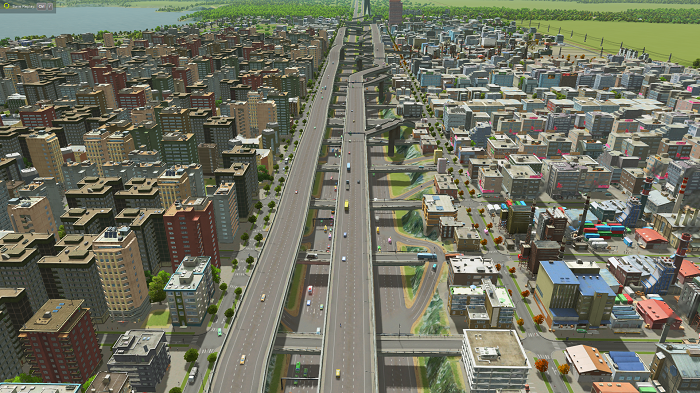Finnish video game developer Colossal Order developed the highly popular city-building and management game Cities: Skylines a few years ago. Since then, the game has been released on several platforms and has garnered scores upon scores of new fans. With more people playing this exciting city builder than ever, we have decided to provide a few important tips to answer one of the biggest questions many players still have. How do you manage traffic in Cities: Skylines?
Traffic touches just about every aspect of Cities: Skylines. If your transportation gets blocked up, then your city will abruptly grind to a halt. Everything from emergency services to construction will be stricken by the sudden stop of traffic. Consequently, it is paramount that you keep traffic flowing at a steady pace. Of course, managing your traffic is no easy task.
- Activate the “Ban Heavy Traffic” policy. This policy will prevent industrial trucks from passing through your residential areas. Small delivery vans will still be able to reach their necessary homes and businesses, while the larger trucks will be forced to stick to major roads for transportation. Another popular policy is “Old Town.” However, this more extreme policy can cause problems from time to time
- Avoid pricier modes of traffic. Opening up an underground passage, subway, or tram system may seem like a good idea at first. But, these are generally quite pricey to install and take an incredible amount of time to turn a profit. Consequently, you will want to focus your efforts on roadways and bike lanes.
- You can never have too many roundabouts or bike lanes. High-density, six-lane roads should be the backbone of your transportation system. In low-density districts, construct two-lane roads with adjacent bike lanes for your traffic. Roundabouts should be used to connect your neighborhoods together. Roundabouts and bike lanes are wonderful ways to reduce traffic around your neighborhoods, so make sure to take advantage of them.
- You need more busses. Busses are paramount for citizen transportation. Having a hearty collection of busses will decrease congestion in your residential areas, while simultaneously decreasing the demand for other public systems such as trains.
- You will need at least one train. While large lane highways will make up the backbone of your transportation, you will need a one connection/one station train to transport inner-city passengers to the various districts of your city. Placing tracks diagonal to your major roads can do quite a bit to help with congestion concerning long distance travelers.
- Separate your industry areas. Especially as your city grows, organizing all of your factories and work districts to a single location will become troublesome. To keep traffic congestion down, consider spreading out your industry sector between multiple areas to spread the traffic around.
- Remember the hierarchy. When building your roads, you are going to need some variety. Massive six-lane highways are great for transporting people from district to district. Meanwhile, four-lane roads should be used to help people traverse from within each district. Lastly, smaller two-lane roads are great for residential areas. Maintaining this hierarchy is a great way to maximize both your transportation and your space.
- Pay attention to your imports and exports tab. Consistently check your imports and exports page so that you can monitor which companies are shipping which supplies. This can be a great way to predict where you will need to provide more transportation.
- Remember to swap out your street lights. Cities: Skylines will automatically add street lights to major intersections within your roadways. At first, this is a beneficial arrangement. However, street lights can really bog down traffic in more congested areas. Consider removing these lights and simply placing stop signs on your secondary roads. This way, traffic from your smaller roads will have to yield to larger roads with more traffic.
- Do not underestimate one-way roads. One-way streets can dramatically decrease congestion in busy areas of your city. Your drivers will have less stop signs, merging traffic and other issues to impede them. That being said, remember that you will need twice as much road since each street only goes in a single direction. You will have to sacrifice space for transit efficiency.







Comments are closed.